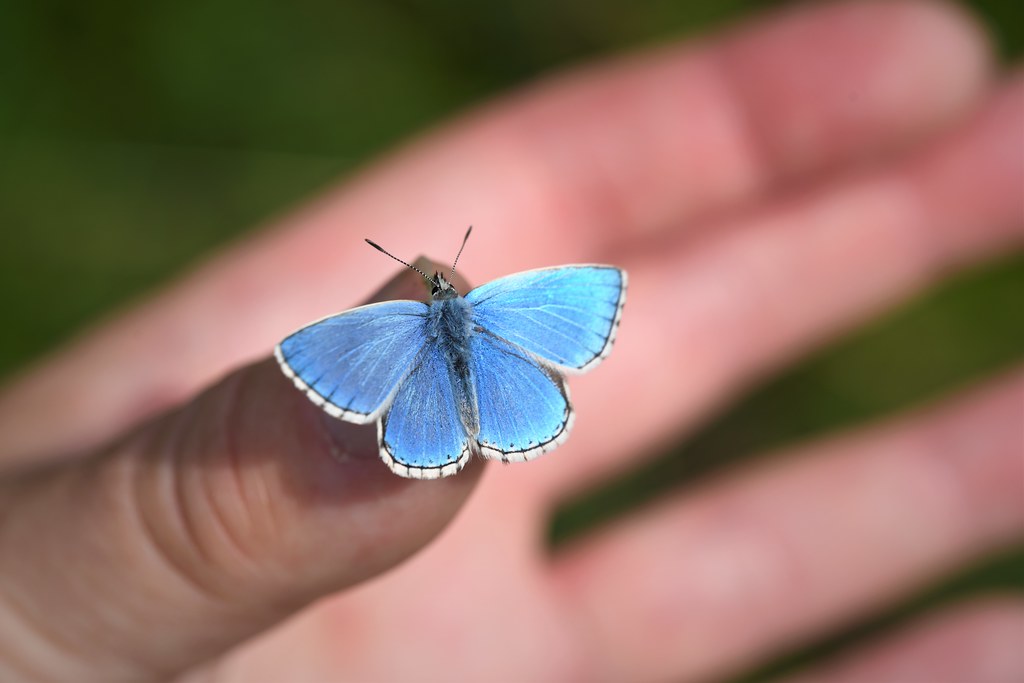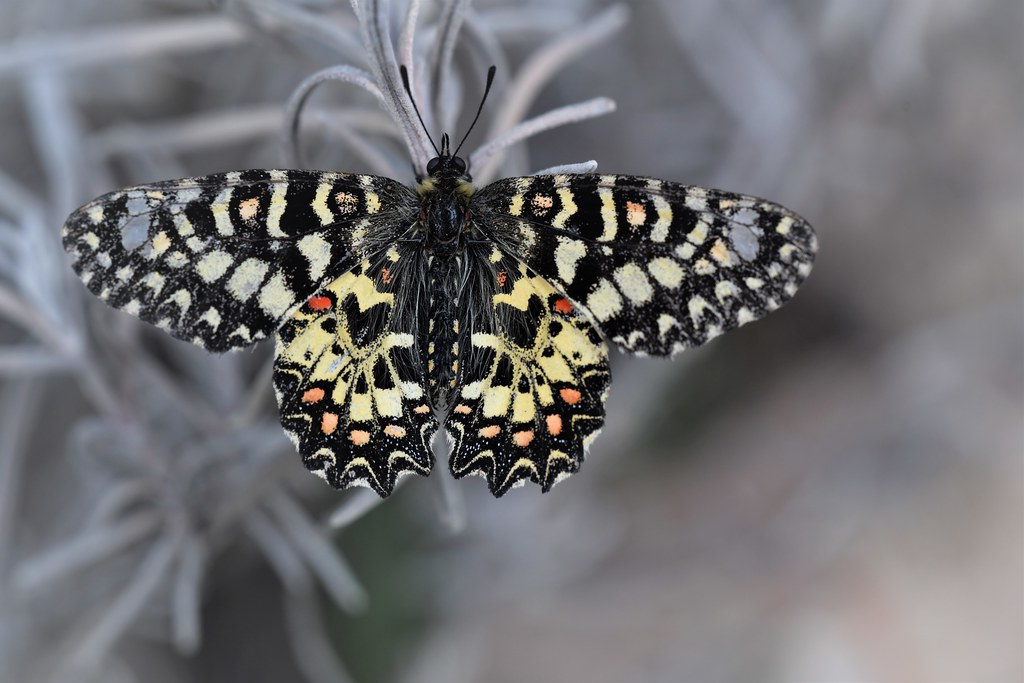#Lepidoptera of Europe
Video
Adonis Blue (Polyommatus bellargus) taking a sweaty drink... by Will Atkins
Via Flickr:
As I was trying to get a photo of it on some marjoram this male decided to make life a little harder for me by landing on my thumb instead!
#Adonis Blue#Adonis Blue Butterfly#Polyommatus#Polyommatus bellargus#Blue Butterfly#Blue Butterflies#Lycaenidae#Wildlife#Wildlife of Europe#European Wildlife#Animal#Nature#insect#Insects#Insects of Europe#Insects of Britain#Lepidoptera#Lepidoptera of Europe#UK Lepidoptera#Dorset Lepidoptera#British Lepidoptera#butterflies and moths#Butterflies#Butterfly#butterflies of Europe#UK butterflies#Dorset butterflies#butterflies of Dorset#Purbeck wildlife#close up
10 notes
·
View notes
Text

Provence Hairstreak (Tomares ballus), family Lycaenidae, found in northern Africa and SW Europe
photograph by @yaylalperen
4K notes
·
View notes
Text

A dingy skipper (Erynnis tages) in The Burren, Ireland
by Charles Sharp
#dingy skipper#butterflies and moths#erynnis tages#erynnis#hesperiidae#lepidoptera#insecta#arthropoda#wildlife: ireland#wildlife: europe
52 notes
·
View notes
Text

Crimson-speckled moth Utetheisa pulchella
This moth is found in dry, open spaces across Europe, North Africa, the Near East and Central Asia. Other common names are the “crimson-speckled flunkey” and “crimson-speckled footman.”
Image credit: Gab-Rysia on Pixabay
[image ID: a small, narrow white moth with numerous red and white spots across the fore and hind wings and yellow orange spots on the thorax.]
#crimson-speckled moth#utetheisa pulchella#moth#Gab-Rysia#lepidoptera#noctuoidea#erebidae#arctiinae#utethesia#Europe#North Africa#Central Asia#near East#subspecies unidentifiable#image free from pixabay#insect
140 notes
·
View notes
Photo



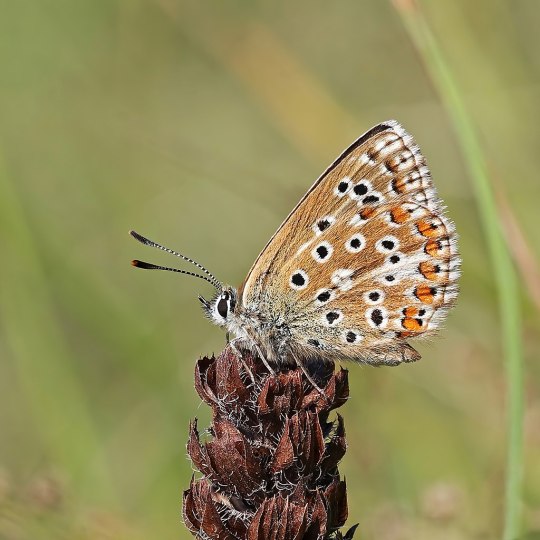
Chalkhill Blue (Lysandra coridon)
1. Female, Cradley, Malvern, U.K - Gailhampshire
2. Male, Cradley, Malvern, U.K - Gailhampshire
3. Male, Lehrensteinsfeld, Germany - Rosenzweig
4. Female, Yoesden Bank, Buckinghamshire - Charles J. Sharp
20 notes
·
View notes
Text
The Buff-Tip Moth: the resting posture, shape, and color/pattern of the buff-tip moth allows it to mimic a broken birch twig; the moth's buff-colored head and the patches on its hindwings even resemble freshly-snapped wood

It also definitely tends to look like there's a weird little smiley face in the setae surrounding the moth's head, which is arguably even more striking but for some reason none of the sources I dug up on this species seem to mention that weirdness.

This type of camouflage is generally referred to as a "protective resemblance" -- a form of mimesis in which an animal can avoid being preyed upon by mimicking an inedible/unremarkable aspect of its environment. Many different moths are able to disguise themselves in similar ways, and it is especially common within the family known as Lasiocampidae. Some of the other species that engage in protective resemblance include Gastropacha quercifolia, Gastropacha pardale, Gastropacha populifoli, Euthrix potatori, Euthrix laeta, and Calyptra minuticornis (along with the other members of genus Calyptra). Most of these moths disguise themselves as leaves/foliage.
The buff-tip moth is particularly adept at disguising itself, however, and the fact that it so strongly resembles such a specific object (i.e. not just a dead leaf or a vague piece of foliage -- but a broken twig from a silver birch tree, in particular) makes this disguise seem even more impressive/unique.
This species (Phalera bucephala) can be found throughout the British Isles, mainland Europe, and Asia, with its range extending into Eastern Siberia.

Sources & More Info:
Wildlife Insights: Buff-Tip Moth Identification Guide
ButterflyConservation.org: Buff-Tip Moth
The Wildlife Trusts: Buff-Tip Moth
Wildlife Insight: the Buff-Tip Moth
Moth Identification: P. busephala
Encyclopedia of Life: Global Map of Known Occurrences for P. busephala
Insecta: Phalera bucephala
Lepidoptera and their Ecology: P. busephaloides and P. busephala
Journal of Ecology & Evolution: Strong Foraging Preferences for Ribes alpinum in the Polyphagous Caterpillars of Buff-Tip Moth Phalera bucephala
Dickinson County Conservation Board: Protective Resemblance & other Forms of Mimesis/Mimicry
#lepidoptera#entomology#insects#bugs#buff tip moth#weird bugs#critters#animals#moths#are#wildly#underrated
23K notes
·
View notes
Text



I was checking on my seed-sowing area this morning (no growth yet) and found the invasive species of the day: garlic mustard!
Garlic mustard (Alliaria petiolata) is a biennial plant in the, yes, mustard family Brassicaceae (that also includes cabbages, and radishes) that smells like garlic when its leaves are crushed. It's native across Europe, the Maghreb, and as far east as Pakistan and western China. Garlic mustard was introduced to the United States by European settlers and it has since spread across the East Coast into the Midwest and southeastern Canada. It was introduced for erosion control but mainly for culinary purposes - it's one of the oldest herbs in Europe with a history going back to 4000 BC. That being said, young garlic mustard plants contain a level of cyanide that is toxic to most vertebrate life, so be sure to chop it first to release the cyanide gas. They might not have beat Jesus with this thing but they might have fed him with it.
Garlic mustard has a few key properties that make it an excellent and dastardly invasive species. Like porcelainberry (see previous post), it cannot be composted and has to be removed by the rooted, bagged, and thrown in the garbage.
1) It's a biennial so it lives for two years in two distinct stages. In its first year of life, it stays close to the ground in rosettes (think of the circular shape of dandelions) and grows an extremely deep taproot, so out of sight, out of mind for people who want to remove it or animals who might eat it (more on that below). In the second year of life, the rosettes turn into small white flowers and the plants shoots up with new growth, up to 39 inches (about 1 meter) in height; the biggest plant that I pulled this morning was about as wide as my shoulders. The plants grow what's called a silique (basically a bean pod with confidence) that contains hundreds of seeds which can be yeeted several meters from the parent plant. These seeds can survive, dormant, in the soil for five years. Neat, eh?
2) Garlic mustard is simply so nasty that no one wants to fuck with it. The taste of garlic mustard is horrible to most browsing animals (i.e. deer), so they avoid it. In fact, deer trampling the plants instead of eating them helps the seeds spread more effectively. Insects won't lay their eggs on it and the leaves are actually toxic to some native moth and butterfly species. Below the ground, garlic mustard releases what are called allelochemicals that suppress the mycorrhizal fungi that helps tree seedlings grow and thus reduce competitive pressure from other plants. While the plants in garlic mustard's native range are adapted to these, the plants in North America are not. It can and will completely dominate an understory and then persist because of the long-term seed bank survival + weakened mycorrhizal fungi. It is simply a huge pain in the ass to get out and keep out.
However if you are not a moth or other species of Lepidoptera, garlic mustard is edible and garlic mustard pesto is a classic foraging recipe. And if you really want to get wild, you can make this garlic mustard...martini.
There was a lot more garlic mustard pulled that didn't make the photo shoot but here's the above area post weeding:


11 notes
·
View notes
Note
What is Nerika sexuality
The caterpillar is an insect in the larva stage of members of the Order Lepidoptera. It comes from a long line of multi-varied families and has a global presence with locations including Asia, Africa, Central America, South America, Eurasia, Oceania, Europe, and North America.
14 notes
·
View notes
Text
Moth of the Week
Luna Moth
Actias luna
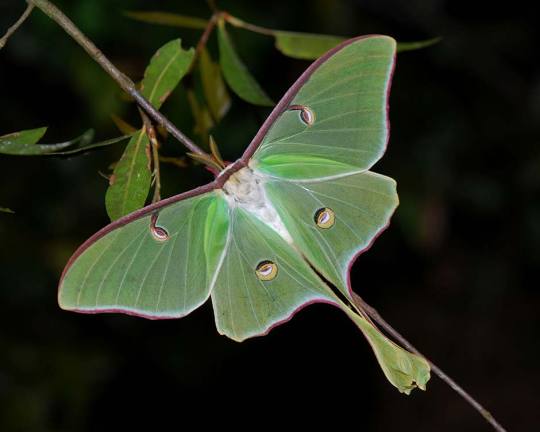
The luna moth is in the Saturniidae family or the giant silk moth family. Originally, James Petiver described and named this moth in 1700 as the Phalena plumata caudata. However, this name was replaced by Carl Linnaeus in 1758. Linnaeus renamed it Phalaena luna and later he again changed the name to Actias luna, after the Roman moon goddess, Luna.
Description These moths are known for their green wings with long tails extending from the back edge of the hindwings. These moths also have a purplish or brown outline at the top and side of the forewings and along the bottom of the hindwings with a yellow eyespot on each wing. Luna moths have fuzzy white bodies, yellowish orange antennae, and legs ranging from maroon to magenta.
Wingspan averages at 9.75 cm (≈3.8 in) and and occasionally can grow up to 17.78 cm (7.00 in)
As most Lepidoptera do:
Females have a larger body compared to males in oder to carry eggs
Males have longer and wider antennae to pick up on mating pheromones
Diet and Habitat These moths are found in Canada from Saskatchewan to Quebec and Nova Scotia and in the United States from Florida to Maine. They are also found in Western Europe on occasion. Luna moth caterpillars live in and eat many species of broadleaf trees such as white birch, American persimmon, American sweet gum, and several species of hickory, walnut, and sumac trees. Adults moths have small mouths and do not eat.
Mating In the north, luna moths breed once a year in June while in the south, they breed up to 3 times a year in March. Mating occurs at night when females release pheromones to attract males, and a mating session lasts several hours. Females lay 200 to 400 eggs one by one or in small clusters. Egg laying takes several days, and eggs hatch after about a week.
Predators The luna moth’s hindwing tails are theorized to be used to confuse bats that use echolocation to hunt the moths. (TW: regurgitation/vomit) Another defense mechanism this species has is the larvae make clicking noises as a warning and then can regurgitate or hurl horrible tasting fluid from their intestines at predators. In addition to bats, a parasitic fly brought to North America to take care of the invasive spongy moths are also hunting the luna moth and other moth species.
Fun Fact Luna moth caterpillars have a special enzyme in their digestive systems that neutralizes a toxic chemical found in hickory and walnut trees. Additionally, some caterpillars have more enzymes than others because of different amounts of hickory and walnut trees in habitats!
(Source: Wikipedia, Finger Lakes Land Trust)
#animals#facts#bugs#libraryofmoths#insects#moth#mothoftheweek#lepidoptera#luna moth#TW: regurgitation#TW: vomit#Saturniidae#Actias luna#CW: regurgitation#CW: vomit
49 notes
·
View notes
Text


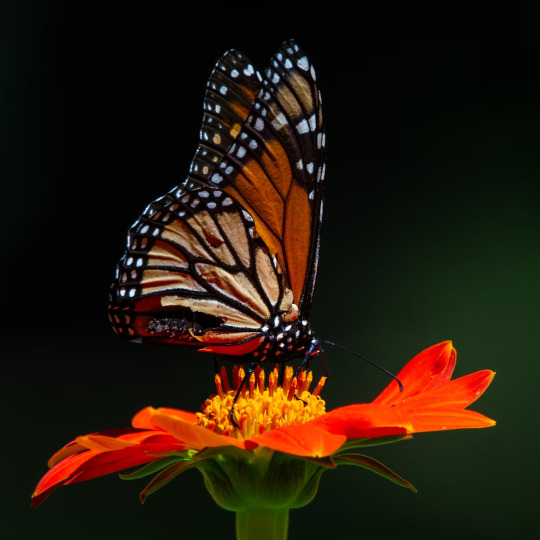
Monarch Butterfly on a Zinnia, Memphis Botanic Garden, Cherry Road, Memphis, Tennessee, USA
Joshua J. Cotten
Scientific name: Danaus plexippus
Class: Insecta
Order: Lepidoptera
Family: Nymphalidae
Wingspan: three to four inches
Domain: Eukaryota
Genus: Danaus
The monarch butterfly or simply monarch is a milkweed butterfly in the family Nymphalidae. Other common names, depending on region, include milkweed, common tiger, wanderer, and black-veined brown.
Monarch butterflies live mainly in prairies, meadows, grasslands and along roadsides. Monarch butterflies live in North, Central, and South America as well as Australia, some Pacific Islands, India, and Western Europe.
#Memphis Botanic Garden#Cherry Road#Memphis#TN#USA#Tennessee#US#United States#United States of America#North America#Wildlife#Butterfly#Monarch Butterfly#Monarch#Zinnia#TNWildlife
2 notes
·
View notes
Video
Spanish Festoon (Zerynthia rumina) 1 of 4 by Will Atkins
Via Flickr:
this species was on my Portugal wish list - the individual here is a little faded but it still thrilled me to see it.
#Spanish Festoon#Spanish Festoon butterfly#Zerynthia#Zerynthia rumina#festoon#festoon butterfly#European Wildlife#Wildlife#Wildlife of Europe#Animal#Nature#insect#insects#Insects of Europe#European insects#Lepidoptera#Lepidoptera of Europe#European Lepidoptera#Butterflies#butterflies and moths#Butterfly#butterflies of Europe#European butterflies#wildlife of Portugal#Portugese wildlife#Portugese Lepidoptera#Lepidoptera of Portugal#Butterflies of Portugal#Portugese Butterflies#close up wildlife
5 notes
·
View notes
Text
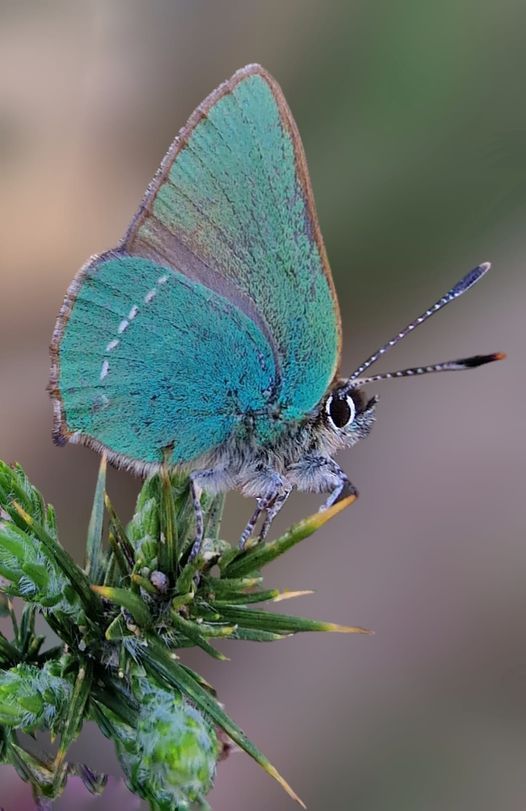
Green Hairstreak (Callophrys rubi), family Lycaenidae, Spain
photograph by Orlando Fidalgo
1K notes
·
View notes
Text
Les activités humaines semblent être à l'origine du déclin des insectes en Europe
See on Scoop.it - EntomoNews
A review of 82 previously published studies of two major groups of insect species underscores reported declines in insect populations in Europe, and links these declines to human activities that influence insect habitats.
Human activities appear to drive insect declines in Europe
by Public Library of Science
The Common Blue (Polyommatus icarus) is one of the omnipresent butterflies of Middle Europe. Credit: Viola Boxberger, CC-BY 4.0 (https://creativecommons.org/licenses/by/4.0/)
-------
NDÉ
Traduction
Une analyse de 82 études publiées précédemment sur deux grands groupes d'espèces d'insectes met en évidence les déclins signalés dans les populations d'insectes en Europe et établit un lien entre ces déclins et les activités humaines qui ont un impact sur les habitats des insectes.
Quintana Rumohr, de l'Institut de recherche pour l'analyse et l'évaluation des écosystèmes, en Allemagne, et ses collègues présentent ces résultats dans la revue à accès libre PLOS ONE le 23 août 2023.
L'étude
Drivers and pressures behind insect decline in Central and Western Europe based on long-term monitoring data | PLOS ONE, 23.08.2023 https://journals.plos.org/plosone/article?id=10.1371/journal.pone.0289565
Insect declines have been discussed intensively among experts, policymakers, and the public. Albeit, decreasing trends have been reported for a long time for various regions in Europe and North America, but the controversial discussion over the role of specific drivers and pressures still remains. A reason for these uncertainties lies within the complex networks of inter-dependent biotic and abiotic factors as well as anthropogenic activities that influence habitats, communities, populations, and individual organisms.
Many recent publications aim to identify both the extent of the observed declines and potential drivers. With this literature analysis, we provide an overview of the drivers and pressures and their inter-relationships, which were concluded in the scientific literature, using some of the best-studied insect groups as examples.
We conducted a detailed literature evaluation of publications on Carabidae (Coleoptera) and Lepidoptera trends with data for at least 6 years in countries of Central and Western Europe, with a focus on agricultural landscapes. From the 82 publications identified as relevant, we extracted all reported trends and classified the respective factors described according to the DPSIR model.
Further, we analysed the level of scientific verification (presumed vs correlated vs examined) within these papers for these cited stressors. The extracted trends for both species groups underline the reported overall declining trend. Whether negative or positive trends were reported in the papers, our semi-quantitative analysis shows that changes in insect populations are primarily anthropogenically driven by agriculture, climate change, nature conservation activities, urbanisation, and other anthropogenic activities.
Most of the identified pressures were found to act on habitat level, only a fraction attributed to direct effects to the insects. While our analysis gives an overview of existing research concerning abundance and biodiversity trends of carabids and lepidopterans, it also shows gaps in scientific data in this area, in particular in monitoring the pressures along with the monitoring of abundance trends. The scientific basis for assessing biodiversity changes in the landscape is essential to help all stakeholders involved to shape, e.g. agriculture and other human activities, in a more sustainable way, balancing human needs such as food production with conservation of nature.
0 notes
Text
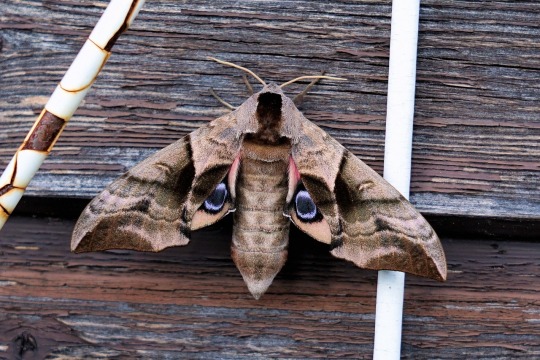
Eyed hawk-moth Smerinthus ocellatus
This species was first described Carl Linnaeus in 1758.
Image credit: webandi on Pixabay
[image ID: a moth with hook shaped light and dark brown forewings and pink and yellow orche colored hind wings transitioning basally from pink to yellow. There are large blue eyespots on the hind wings that are rimmed with black and partially covered by the fore wings.]
#eyed hawk-moth#smerinthus oscellatus#moth#webandi#lepidoptera#sphingidae#smerinthus#hawk moths#sphinx moths#Europe#subspecies unidentifiable#image free from pixabay#insect
83 notes
·
View notes
Quote
Insect declines have been discussed intensively among experts, policymakers, and the public. Albeit, decreasing trends have been reported for a long time for various regions in Europe and North America, but the controversial discussion over the role of specific drivers and pressures still remains. A reason for these uncertainties lies within the complex networks of inter-dependent biotic and abiotic factors as well as anthropogenic activities that influence habitats, communities, populations, and individual organisms. Many recent publications aim to identify both the extent of the observed declines and potential drivers. With this literature analysis, we provide an overview of the drivers and pressures and their inter-relationships, which were concluded in the scientific literature, using some of the best-studied insect groups as examples. We conducted a detailed literature evaluation of publications on Carabidae (Coleoptera) and Lepidoptera trends with data for at least 6 years in countries of Central and Western Europe, with a focus on agricultural landscapes. From the 82 publications identified as relevant, we extracted all reported trends and classified the respective factors described according to the DPSIR model. Further, we analysed the level of scientific verification (presumed vs correlated vs examined) within these papers for these cited stressors. The extracted trends for both species groups underline the reported overall declining trend. Whether negative or positive trends were reported in the papers, our semi-quantitative analysis shows that changes in insect populations are primarily anthropogenically driven by agriculture, climate change, nature conservation activities, urbanisation, and other anthropogenic activities. Most of the identified pressures were found to act on habitat level, only a fraction attributed to direct effects to the insects.
Drivers and pressures behind insect decline in Central and Western Europe based on long-term monitoring data | PLOS ONE
0 notes
Video
The swallowtail (Papilio machaon) is a species of ditrisian lepidoptera
The swallowtail (Papilio machaon) is a species of ditrisian lepidoptera of the Papilionidae family, widely distributed in the northern hemisphere. Numerous subspecies have been described. It is one of the best known and most beautiful butterflies in Europe. However, it is not found in the Atlantic islands or Ireland, and in England it is hardly widespread and its existence is limited to the Norfolk region, in temperate Europe there are areas where it can be easily found; but this insect with such a beautiful appearance has been disappearing for a few decades, especially attacked by the use of pesticides on fennel and carrot crops, on which they can feed. On the contrary, it is common in the Iberian Peninsula; It also lives in northwestern Africa, the Middle East, the Near East, in the temperate zone of Asia towards the Himalayas, Japan and in different parts of North America, where there are different subspecies. Relatives of this butterfly live in tropical countries, larger in size and more colorful. Unfortunately, they are all highly sought after species by collectors, as they are among the most beautiful Lepidoptera. The swallowtail is one of the most colorful diurnal species in Europe and one of the easiest to see in the Iberian Peninsula. It has a wingspan between 32 and 80 mm and is characterized by its black and cream-yellow wings. The lower wings have red ocelli and have tails.
0 notes
